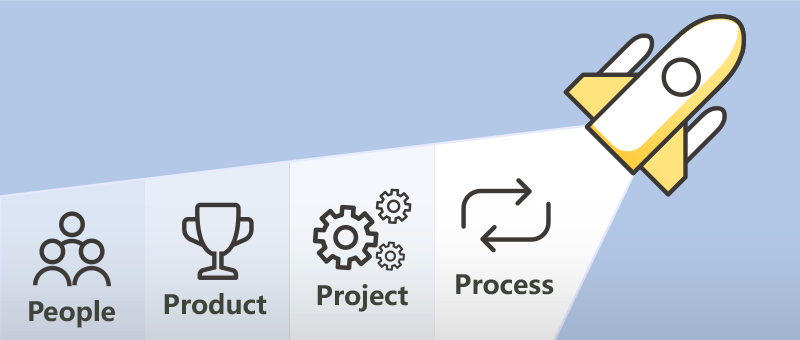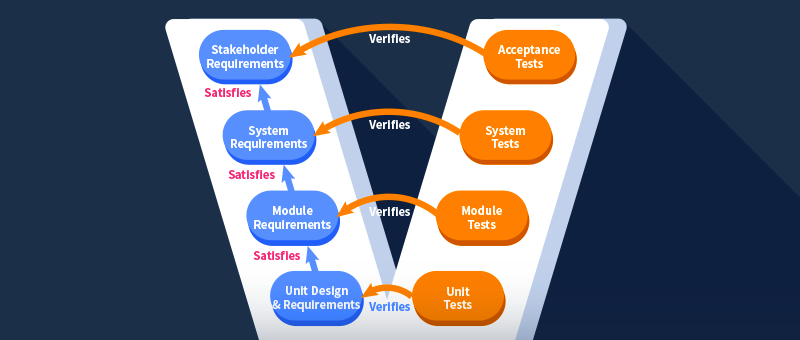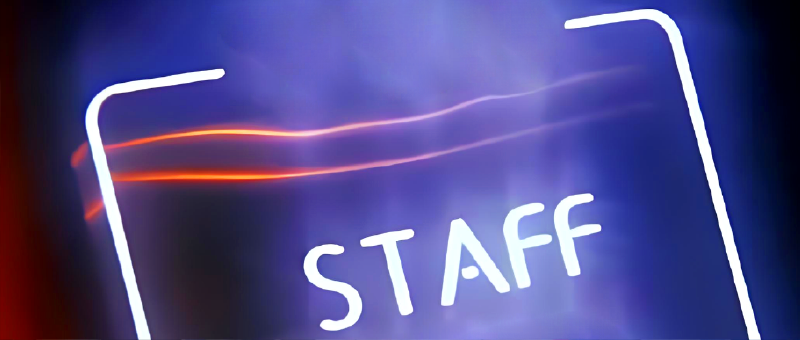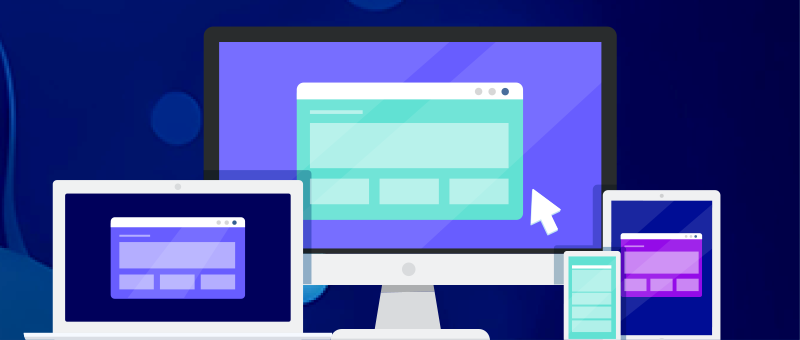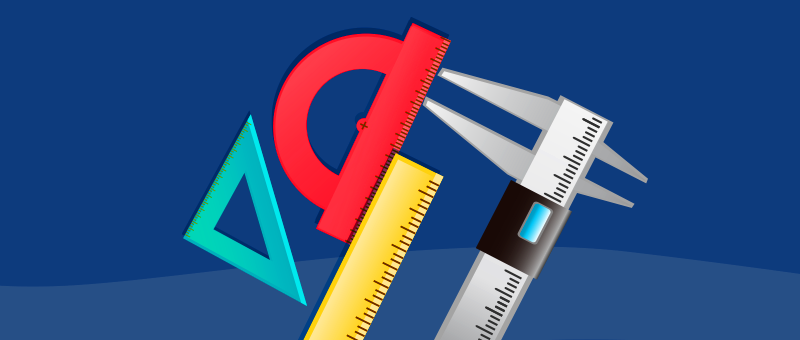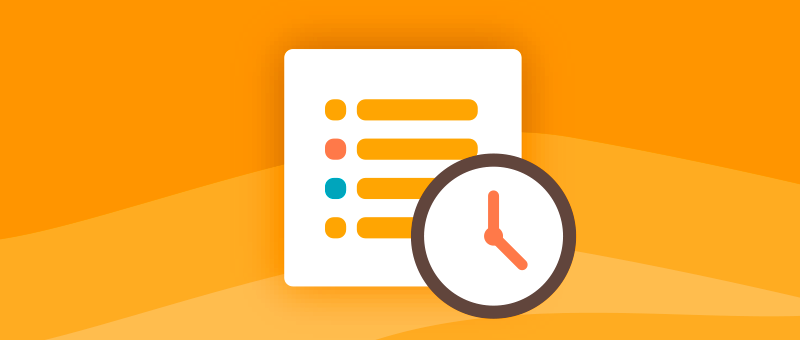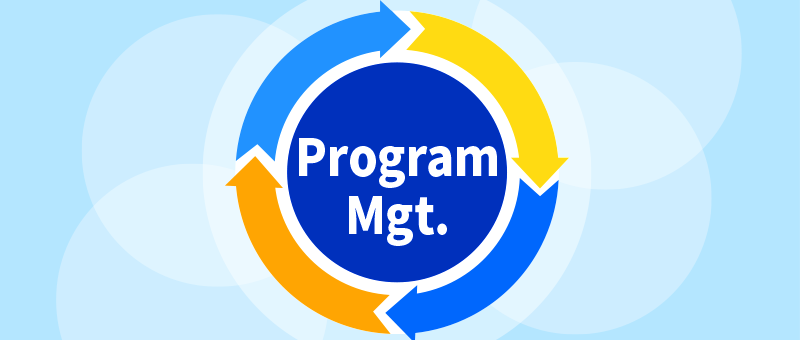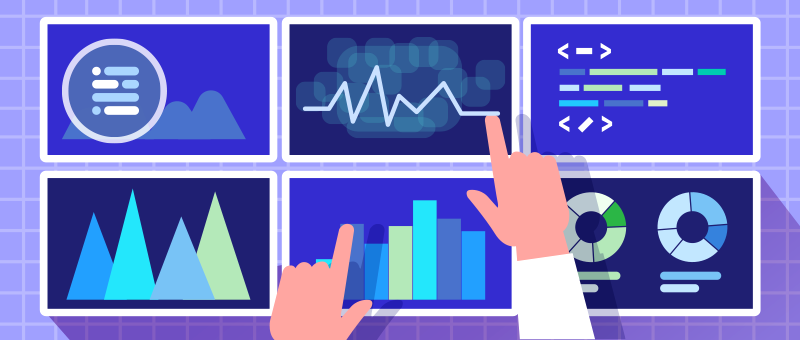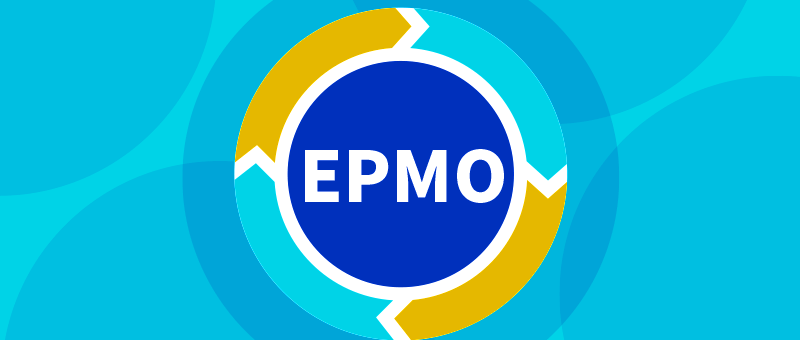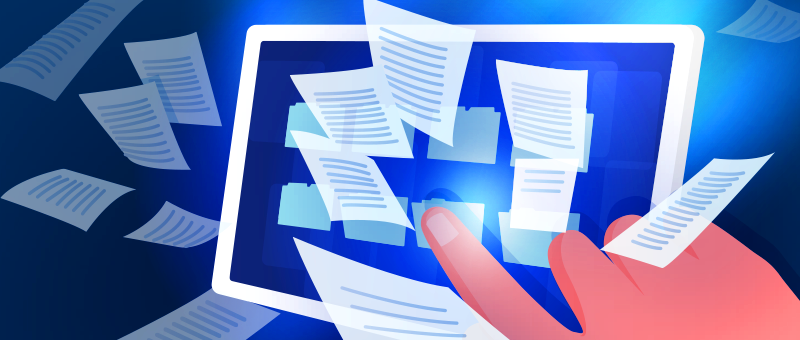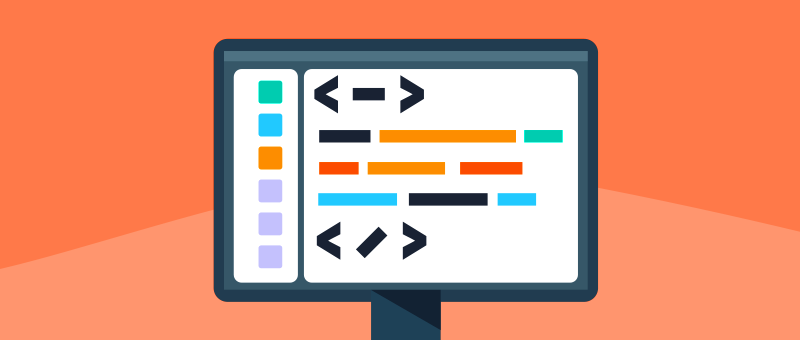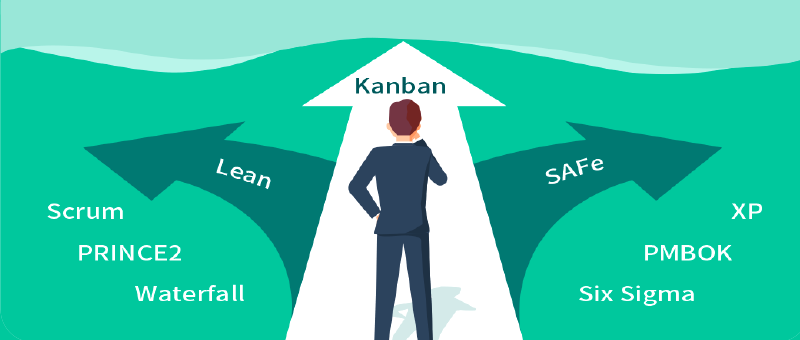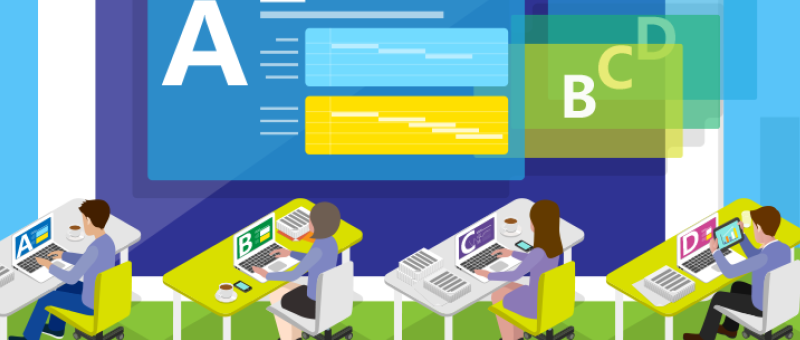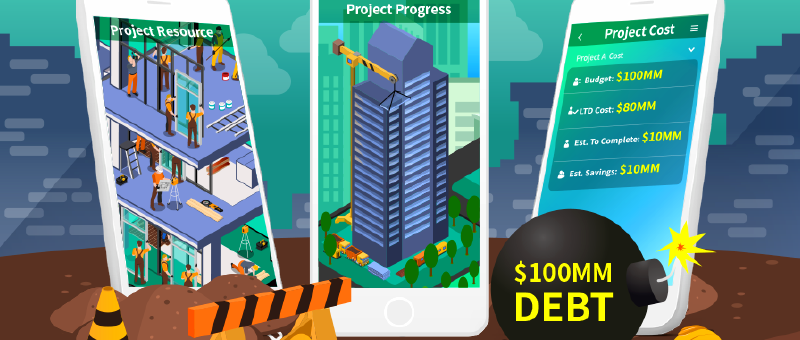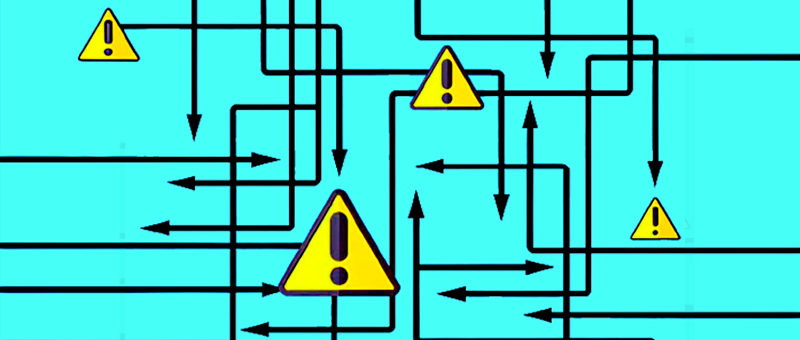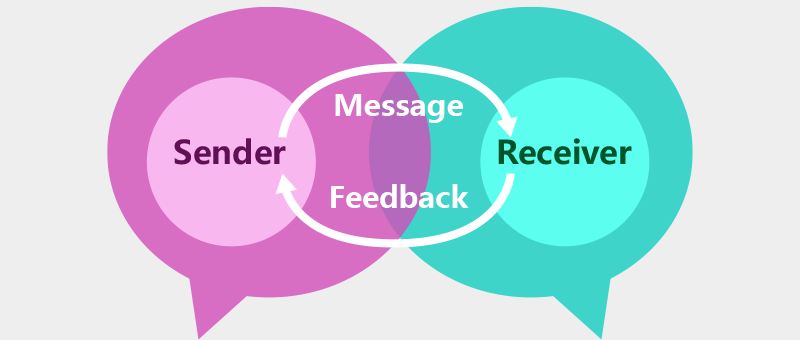
-
8Manage High Performance PMO
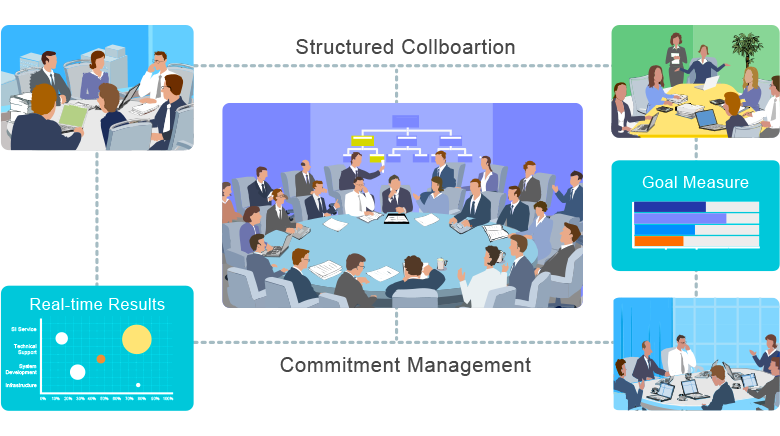
8Manage PMO is for portfolio & program management. 8Manage allows the PMO manager to effectively manage goals, collaborations, commitments and investments in a goal-oriented multi-project environment.
8Manage PMO can aggregate information from individual projects to it in real-time -
Governance & Policies
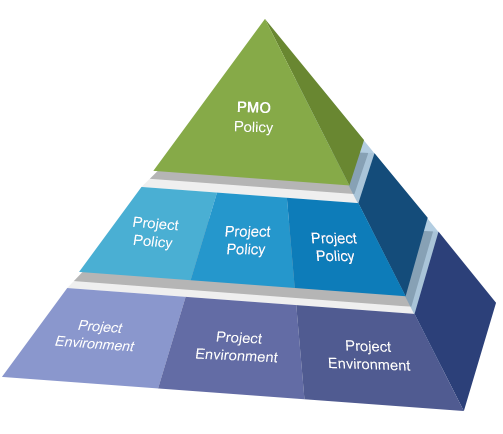
A PMO often needs to enforce certain policies and rules in order to make its monitoring and control across multiple projects effective. 8Manage is a policy-driven system which allows selective policy enforcement in project planning and execution and it offers a rich set of configurable policies and controls for the following areas and these policies and controls can be structured according to enterprise-level, program-level and project-level requirements:
- Goals & critical success factors
- Scope control & phase measure
- Time & resource control
- Cost classification & control
- Review & acceptance process
- Quality control
- Outstanding issue control
- Change control
- Procurement control
- Earned value measure
- Communication, alert & escalation rules
Besides providing the effective policy mechanism for measurement and control, 8Manage also provides anonymous Reality Check to find out people's perception of the healthiness of the program or project and collect useful information for maintaining the healthiness of the program or project.
-
Project Request & Prioritization
Multi-project or program management will become more predictable if project requests and prioritization are properly managed. 8Manage provides the Project Request feature to allow the requesting party and the responsible committee to properly communicate, investigate and assess cost-benefit, risk and impact before doing the final prioritization.

Since prioritization needs multidimensional assessments from cost-benefit, key resource availability and risk management points of view, 8Manage provides the Investment Attention functionality to allow the management team to look at new project requests and existing projects as the big picture to make proper assessments, trade-offs and prioritization.
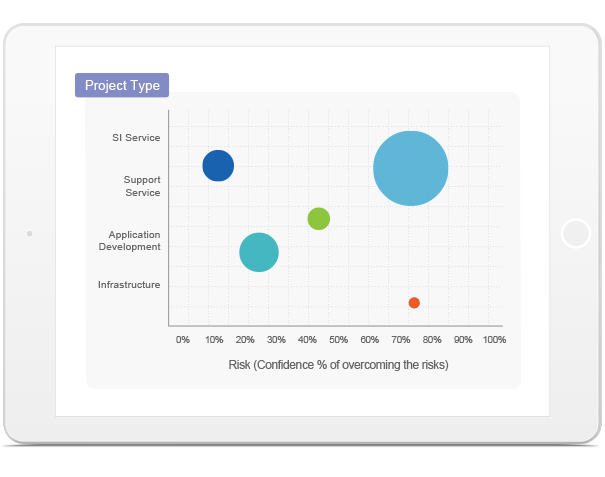
After the new project requests have been approved and become official projects, Investment Attention can also continue monitoring planned schedule vs. actual progress, risks and planned ROI vs. actual ROI.
-
Multi-project Structured Collaboration

The project and program-oriented collaboration capability can make the success or failure difference for multi-project or program management. 8Manage provides the foundation for individual and group coordination and interaction and its major project and program-oriented collaboration functions are described as follows:
- Functional, project and program-oriented organization management
- Common language for request, commit, deliver and accept for project and program deliverables
- Group, committee and site coordination and management
- Client, partner and supplier coordination and management
- Inter-organization interaction and escalation management
8Manage’s Project and Program-oriented Collaboration functionality combined with its Accountability & Clear Result management capability will create high performance program management capability for your organization. -
Multi-Project Scope & Requirements Management

8Manage centralizes scope & requirements management in program-level and also project-level and provides Requirements Request to capture, filter, clarify and validate requirements and Requirements Matrix to organize requirements and track their progress from start to completion. Project level requirements information is automatically aggregated to the program level in real-time.
8Manage Reality Check facility can be used to detect scope communication issues and requirements instability issues at program-level or project-level. Requirements review and acceptance are automatically tracked and requirements changes must go through the strict change control process. 8Manage also provides Real-time Display Components for analyzing and displaying requirements management information.
-
Multi-Project Time Management
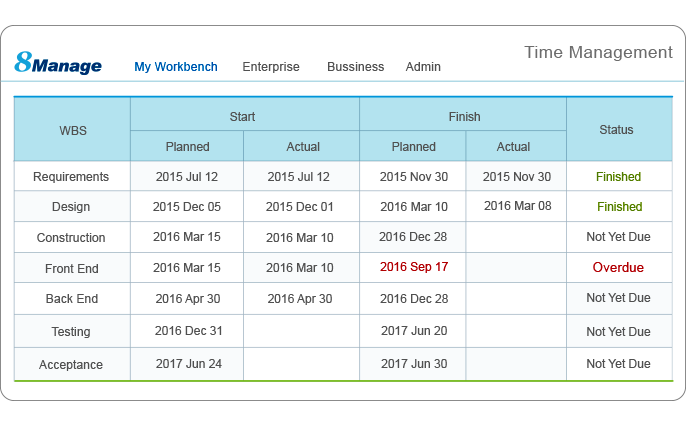
8Manage automatically tracks time and progress for each project activity and deliverable. The % of completion of lower level activities and deliverables are automatically aggregated up to the higher level activities, project and program. Overdue activities and deliverables are flagged and alert messages will be sent to the affected stakeholders.
8Manage always keeps track of original scheduled time, latest scheduled time and actual completion time and highlights the discrepancies. 8Manage can also keep track of multiple baselines (versions) of the project plan. -
Multi-Project Dependency Management
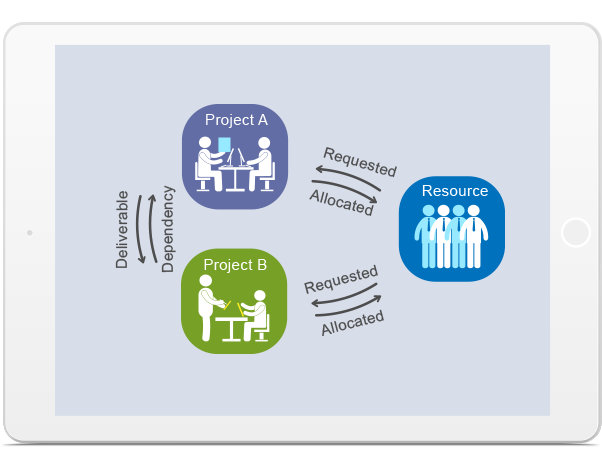
8Manage supports mandatory and discretionary dependency and tracking in project and program levels. It also supports dependency and tracking on key resources and shared resources in project and program levels. For each activity or deliverable, 8Manage tracks all its direct and indirect dependencies. The dependency icon will turn red when the dependency falls behind the predefined tolerance limit.
8Manage also supports dependent (others depending on me) tracking to ensure the responsible person of each deliverable would understand its change impact to others.
-
Multi-Project Cost Management

8Manage provides the comprehensive revenue & cost budgeting & tracking functionality at activity, project and program levels and the full traceability of project revenues with sales orders and contracts and project costs with timesheets, expenses, PO, invoices and payments.
8Manage provides the following project and program accounting functionality:- Program-defined cost classifications linking to COA
- Automatic labor cost calculation based on timesheets
- Automatic procurement cost calculation based on PO & contracts
- Automatic expense calculations based on expense reports
- Automatic checking supplier invoices against PR and PO
- Invoice aging and overdue management
- Invoice and payment linkage
- Budget variance detection and reforecast
- Real-time linkage of project cost to program cost
-
Multi-project Quality Management
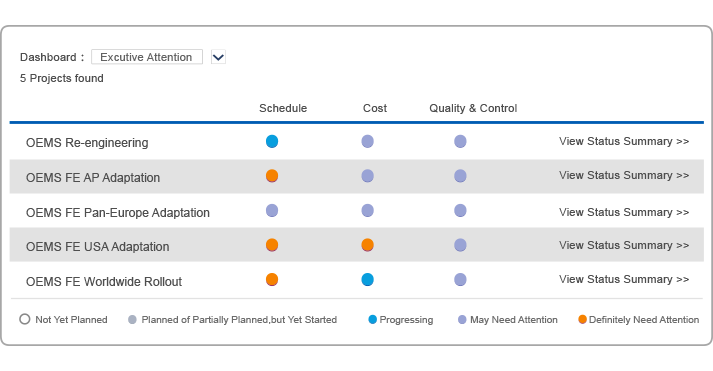
8Manage provides Quality Metrics to allow the project manager to set measurement targets and gauge the incremental and final deliverable qualities. 8Manage also allows the program managers to set different policies for her program to enforce Review & Approval for controlling qualities during deliverable creation and finalization in the projects under the program.
8Manage Reality Check can be used to detect process issues and deliverable quality issues and Real-time Dashboards can be used to disseminate Quality Metrics, Review & Approval and Reality Check information effectively at real-time so that quality problems and achievements can be seen by everyone at the earliest possible time.
-
Multi-project Communications Management
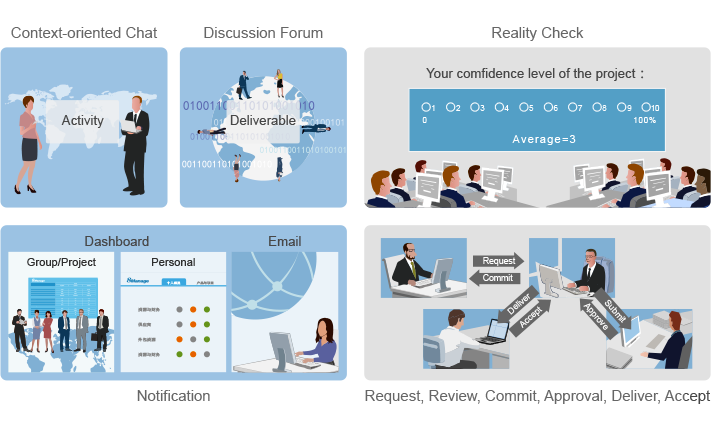
8Manage automates the following for project and program communications:
- Automatic Alerts & Notifications
- Automatic generation & delivery of Weekly Status Report
- Real-time Chat
- Discussion forum
- Reality Check
8Manage supports Iterative Reviews & Acceptance of deliverables to support the short iteration needs in communication for complex problem-solving. 8Manage also facilitates Structured Interactions and provides real-time information, allowing teams to make informed decisions.
The most powerful communication tool in 8Manage is its Data Agility & Preciseness that help projects and programs tremendously reduce miscommunications and enhance teamwork & effectiveness. -
Multi-project Resource Management
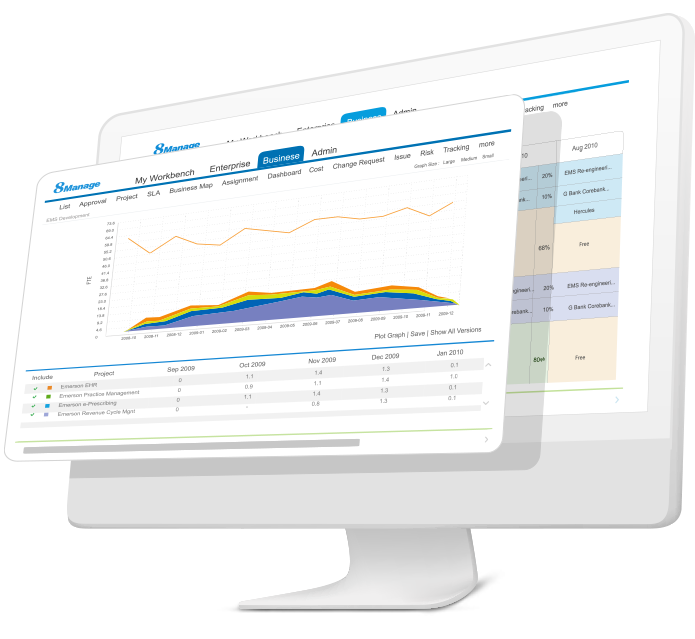
8Manage provides features for searching, requesting, allocating and tracking of resources in multiple sites, groups, activities, projects and programs. 8Manage also provides advanced resource management features such as program-defined resource roles and resource leveling.
8Manage resource management features include:
- Automated resource search across sites & groups based on skill & availability
- Facilitating & tracking of resource provision, allocation & utilization
- Resource allocation automates cost estimating & budgeting
- Comparison of resource planned vs. actual utilization
- Automatic detection of overloaded & inadequate resources
8Manage also provides rich resource planning and utilization reports so that you can analyze resource provisioned vs. allocated vs. actual at deliverable, activity, project and program levels over time.
-
Multi-project Risk Management
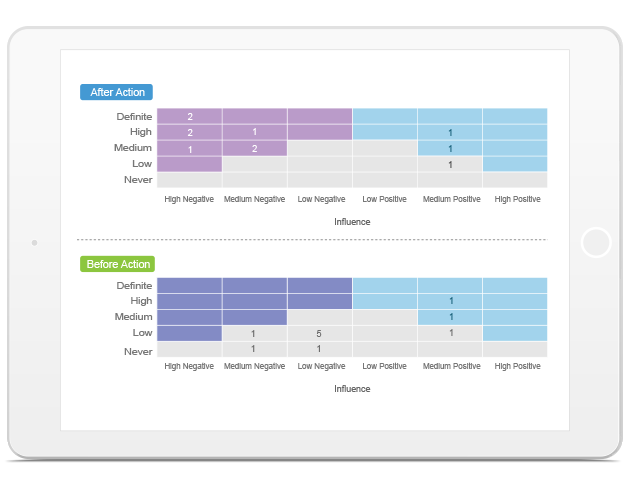
8Manage automatically detects Systemic schedule, cost, resource and quality Risks and their impacts and extrapolates the ultimate impacts from existing impacts so that people can see the severity of the damages if the risks aren’t properly managed.
8Manage also provides an integrated Risk Register for recording user-identified risks and tracking them from start to closure. In Risk Register, each risk is classified and evaluated from low to high chance of happening and from low to high impact before and after the identified actions are taken so that people can easily assess the effectiveness of their Risk Medication actions.
All risk information will be automatically aggregated from project-level to program-level in real-time.
-
Multi-project Procurement Management
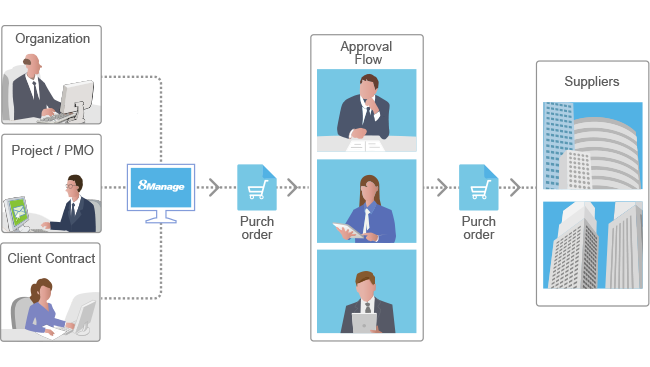
8Manage supports e-Supplier Management, e-Tender and e-Procurement at activity, project and program levels. The tendering process is rule-driven and its security and integrity are well controlled by the system. For procurement, 8Manage supports PR, PO, and invoice and payment management. It also supports procurement contracting, subcontracting and outsourcing.
8Manage also supports Project or Program-based Procurement. A gigantic or complex procurement task can be a project with multiple procurement activities of various types. Procurement information will be aggregated according to the project WBS structure and schedule, resource and dependency can be managed using project and program management discipline.
-
Multi-Project Issue Management

8Manage supports raising, assigning, acting, tracking, escalating and closure of issues at activity, project and program levels and allows the linkages of issues to risks, change requests and actions. 8Manage provides Issue Map to allow the user to walk through the linkages surrounding issues. Escalated issues will be marked in RED and the person(s) that the issue is escalated to must acknowledge the escalation. Issues raised in lower level activities are automatically aggregated up to their upper level activities, project and program.
-
Multi-project Change Management
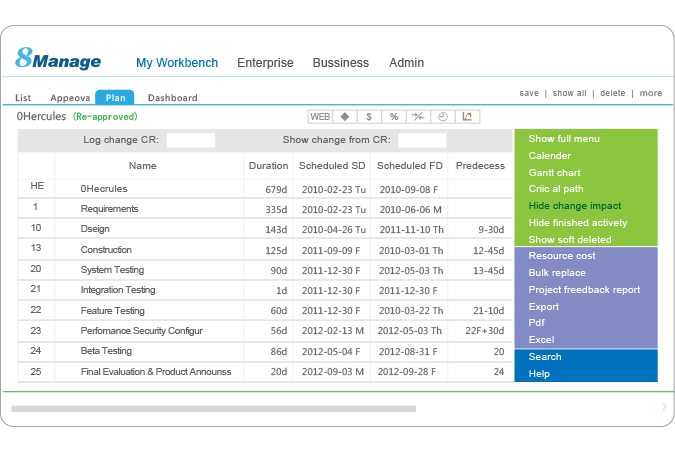
8Manage provides Change Request to allow the user to record and manage changes. Each Change Request contains the following information:
- Discovered In
- Plan
- Work Order
- Resolution
- Impact
Each Change Request can be in one of the following states:
- Assigned
- Accepted responsibility
- Submitted proposal
- Submitted resolution
- Accepted resolution
- Closed
A Change Request can be applied for change information logging during the project. WBS is being changed and the change impact information will be associated with the Change Request permanently. When people need to find out the change impacts of a particular Change Request or set of Change Requests, they can enter the Change Request number(s) to the system and the system will provide the change impact information. All Change Requests are automatically aggregated from project-level to program-level in real-time.
-
Multi-project Real-time Monitoring & Tracking

8Manage provides the following dashboards for communicating status, identifying problems and tracking necessary actions:
- Overall
- Cost
- Phase Info
- Resource
- Dependency
- Deliverable
- Risk
- Change Request
- Reality Check
- Key Measure & Comparison
8Manage provides both the individual project view and aggregated program view for each of the real-time dashboards mentioned above.
-
Multi-Project Critical Success Factors (CSF) Management
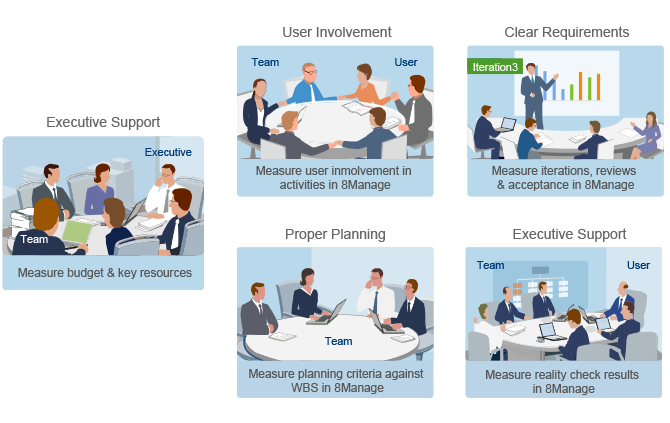
The designers of 8Manage understood the importance of the intangible factors that affect project and program success tremendously and designed built-in functionality in 8Manage for managing these critical success factors (CSF). The built-in functionality will help project and program managers to understand where they are falling short on the important but sometimes not very easy to detect factors.
8Manage allows project and program managers to select the critical success factors suitable for their environment. 8Manage also intelligently consolidates the top factors for success and the top factors for failure so that the program and project managers will only need to concentrate to deal with only a few key factors. For example, 8Manage can consolidate below to come only 5 factors that will need attention most:
Top 5 Factors for Success:
- User involvement
- Executive support
- Clear statement of requirements
- Proper planning
- Realistic expectations
Top 10 Factors for Failure:
- Incomplete requirements
- Lack of user involvement
- Lack of resources
- Unrealistic expectations
- Lack of executive support
- Changing requirements & specs
- Lack of planning
- Didn't Lack of IT management
- Technical incompetence
The key for 8Manage managing the few important factors effectively is knowing how to measure these factors which are hard to measure. The measurement will help the program and project managers to see where they are falling short and can utilize their knowledge of the environment and problem-solving skills to enhance the situation. Without the measurement, most of the time program and project managers aren’t even aware of the fact that they are falling short in some of the important areas. -
Multi-Project Business Map
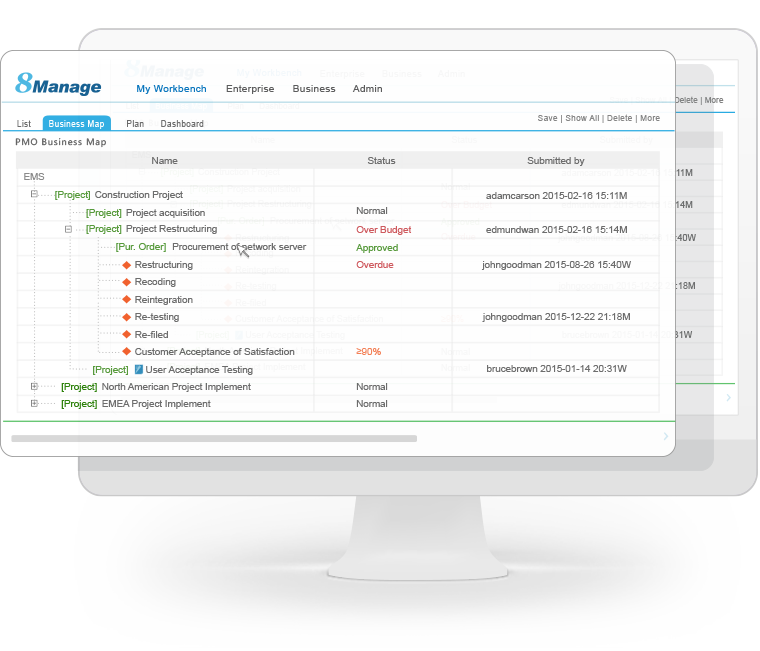
8Manage provides the Business Map to allow the program manager to monitor all the projects in her program on 1 screen. Business Map also allows the executive to view all programs and projects in the entire enterprise on 1 screen. The information reflected on the business map is aggregated from the lowest level transactions (e.g., request, deliver, accept) to the highest level in real-time and therefore the information is not only instantaneous, but can be drilled down in real-time for details. Using 8Manage, the deliverables can only be completed/accepted on the 8Manage platform, therefore, the information reflected in Business Map is accurate, precise and agile.
Business Map allows the top of the organization to understand the middle and lowest parts of the organization and also provides the visibility for the middle and lowest parts to shine though with their good performance. The clear, instantaneous and reliable information is to keep people honest so that everyone would be focusing on problem-solving and producing rather than politicking.

In combination with 8Manage’s other add-on modules, the PMO Business Map can become the Enterprise Business Map which allows executives to monitor the performance of various business portfolios and projects in the enterprise. The change after the add-on isn’t the basic functionality of the business map but the orientation is toward specific business.
Like the PMO Business Map, the Enterprise Business Map allows the top of the organization to understand the middle and lowest parts of the organization and also provides the visibility for the middle and lowest parts to shine though with their good performance. The clear, instantaneous and reliable information is to keep people honest so that everyone would be focusing on problem-solving and producing rather than politicking.


